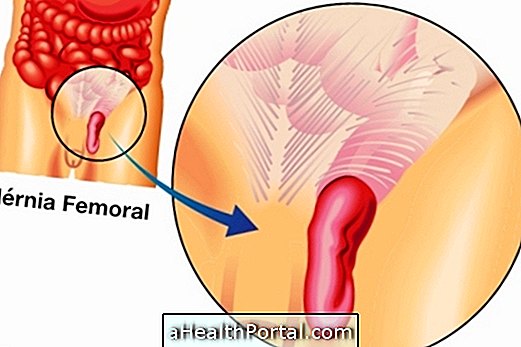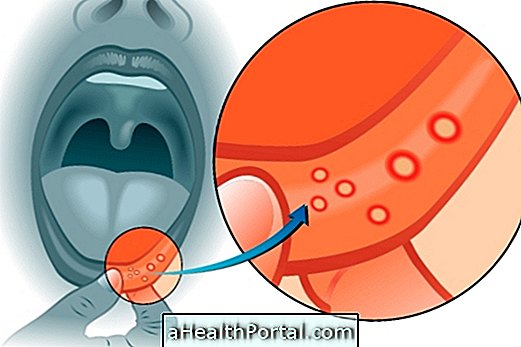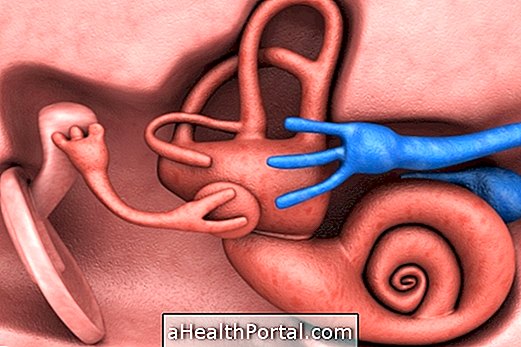The femoral hernia is a protuberance that appears in the thigh due to the displacement of part of the intestine to that region. It is more common in women, usually has no symptoms and is not very common. This hernia appears in the femoral canal, which is located just below the groin, where the femoral artery and some small veins and nerves are present.
The diagnosis of the femoral hernia is made through physical examination performed by the physician, in which the characteristics of the hernia are observed, such as size and swelling in the region. Usually the femoral hernia, when diagnosed, is monitored periodically by the physician in order to monitor the symptoms.

Possible causes
Femoral hernia does not have a specific cause, but people who are overweight, overweight, smoke, have frequent cough or chronic constipation are more likely to develop this type of hernia. Femoral hernia is not common, but it happens more often in women. Understand better why the hernias arise.
Main symptoms of femoral hernia
Femoral hernia is usually asymptomatic, and usually presents only as a protrusion in the thigh near the groin, but there may be symptoms depending on size, especially discomfort when lifting, straining or carrying weight.
In addition, the hernia can impede blood flow to the intestine, characterizing a severe picture of femoral hernia called strangulation or intestinal obstruction, whose symptoms are:
- Vomiting;
- Nausea;
- Stomachache;
- Abdominal pain;
- Excess gases;
- Constipation or diarrhea;
- Cramps.
If the hernia is not removed through surgery, the person may be life-threatening, as there is compromised blood flow. Therefore, when the first symptoms appear, it is important to go to the doctor to have confirmation of the diagnosis.
How is the diagnosis made?
The diagnosis of femoral hernia can be made by the general practitioner through physical examination through observation and palpation of the region. Ultrasonography can also be used to confirm the diagnosis and to better observe the hernia.
The differential diagnosis is made for the inguinal hernia, which is a bulge arising in the groin due to the exit of a part of the intestine, and is more frequent in men. Learn more about inguinal hernia.
How to treat femoral hernia
The treatment of the femoral hernia is established by the doctor and depends on the size of the hernia and the discomfort felt by the person. If the hernia is small and causes little or no discomfort, it is recommended that there be periodic monitoring by the physician, always looking for symptoms, swelling in the area, and increased hernia.
In situations where the hernia is large, it causes a lot of discomfort, and the person has symptoms that may be indicative of intestinal strangulation, the indication is to remove the femoral hernia through surgery. After removal, the hernia is unlikely to recur. See how hernia surgery is done.

















-o-que--quando-fazer-e-como-funciona.jpg)



